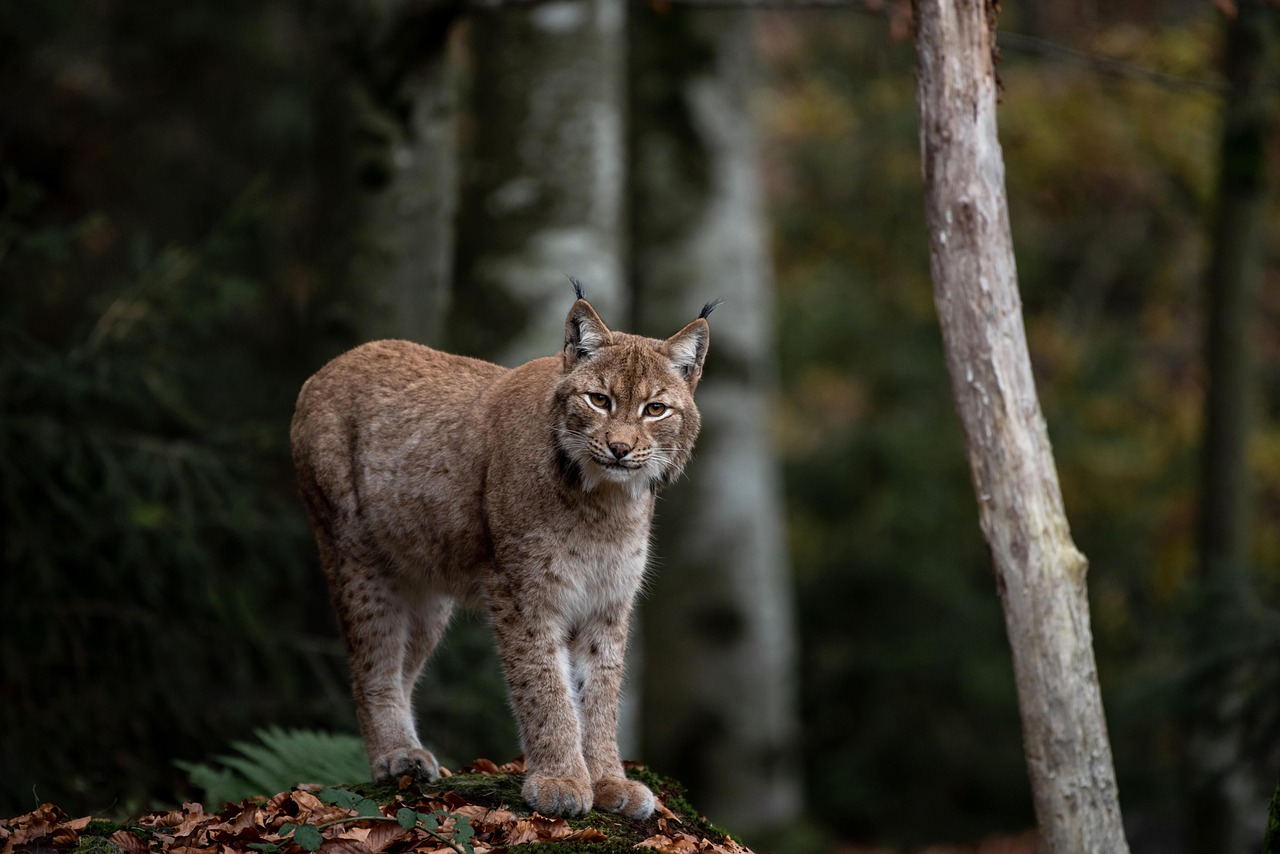Lynx (Lodjur)

Characteristics:
The Eurasian lynx is Sweden’s only wild cat and is easily recognised by its tufted ears, short tail, and spotted fur. Body length 80–130 cm, tail 15–25 cm, and weight 8–30 kg (males heavier than females). The coat is grey-brown to reddish-brown with dark spots, which vary in size and density between individuals. The winter coat is thicker and paler than the summer coat.
The lynx has strong legs and large, fur-covered paws that act like snowshoes, allowing it to move quietly and easily through deep snow.
Habitat:
Found throughout much of Sweden, from Skåne to Lapland, though most common in the central and northern regions. It prefers forested, hilly areas with plenty of cover and abundant prey, especially roe deer.
Behaviour:
The lynx is solitary and territorial. Territory size depends on prey density — females hold smaller ranges, while males may overlap several female territories. The species is mainly nocturnal, cautious, and silent. It hunts by stalking and ambushing prey, often in dense vegetation.
Diet:
A carnivore, the lynx feeds primarily on roe deer, but also takes hares, birds, and reindeer. Smaller prey are eaten immediately, while larger kills are often covered with snow or vegetation and revisited over several days.
Reproduction:
Mating occurs in March–April. After a gestation period of about 70 days, the female gives birth to 1–4 kittens in May–June, in a well-sheltered den under rocks, fallen trees, or dense vegetation. The kittens remain with their mother for about 10 months.
Tracks and signs:
- Tracks: Round paw prints without visible claw marks (unlike dog tracks). Front paw 7–9 cm, hind paw slightly smaller. Step length 50–100 cm.
- Droppings (scat): Short, segmented, often containing hair, bones, or feathers.
- Kills: Often partially covered with snow, moss, or leaves.
- Scratching: Lynx sometimes claw trees to mark territory.
Distribution:
The Eurasian lynx is found across large parts of Europe and Asia. In Sweden, the population is estimated at 1,200–1,700 individuals. The species is protected, but licensed hunting may be permitted to regulate populations.
Hunting:
Licensed hunting is determined annually by the county administrative boards. Hunting is usually carried out by tracking in snow, stalking, or waiting near carcasses or travel routes.
Firearm class (Sweden):
Hunting lynx requires a class 1-2 rifle or shotgun.
Think for the hunting exam:
- Sweden’s only wild cat species.
- Recognised by ear tufts, short tail, and spotted coat.
- Hunts mainly roe deer.
- Solitary and nocturnal.
- Tracks: round prints without claw marks.
- Protected species — licensed hunting may be allowed.
- Hunted with class 1-2 rifle or shotgun.
